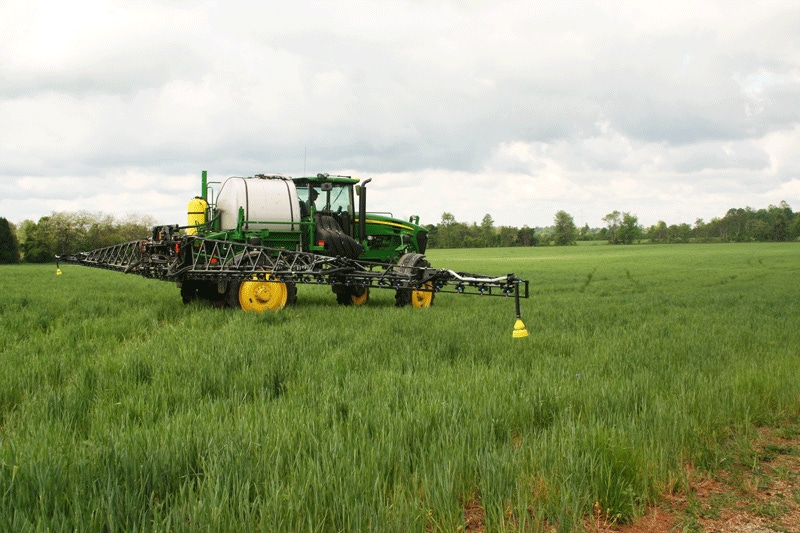
Winter annual cover crops can increase profits
• Cover crops provide soil cover.• Cover crops improve soil fertility by adding organic matter to the soil and furnish moisture conserving mulch. • Legume cover crops (e.g. red clover) have tap roots that can penetrate hard pans and reduce soil compaction. • Certain cover crops can supply nutrients to cash crops and thus reduce purchased fertilizer inputs.
June 24, 2011

Research on cover crops started in the 1940’s.
The book, Managing Cover Crops Profitably, 3rd Edition, which is published by Sustainable Agriculture Network, discusses how and why cover crops work and provides an extensive listing of cover crops.
There are a number of benefits to planting cover crops.
Cover crops provide soil cover which helps prevent soil erosion by wind and water and reduces leaching (nitrogen and phosphorus) into surface water and groundwater.
Cover crops improve soil fertility by adding organic matter to the soil and furnish moisture conserving mulch.
Legume cover crops (e.g. red clover) have tap roots that can penetrate hard pans and reduce soil compaction.
Certain cover crops can supply nutrients to cash crops and thus reduce purchased fertilizer inputs.
Sometimes the cash crop does not use all the available nutrients (e.g. nitrogen, phosphorus, potassium, etc.) in the soil at the end of a growing season.
Non-legume species (e.g. barley, cereal rye, wheat) absorb existing available soil nitrogen by recycling nutrients and preventing nutrient leaching.
Decomposition of the roots and above ground biomass results in the nutrients becoming available for crops in the next growing season.
A major benefit
A major benefit of legume cover crops is their ability to fix atmospheric nitrogen that can be used by the subsequent crop. Consequently, the legume cover crops can supply a significant amount of needed nitrogen to grow the following crops; e.g. grain and sweet corn, grain sorghum and vegetables.
Popular winter annual cover crops in Virginia are barley, wheat, and cereal rye. These crops can be planted with greatest success using a no-till or conventional grain drill.
If the seed is broadcast, the field should be rolled with a cultipacker after planting to ensure good soil to seed contact.
Barley, wheat, and cereal rye can be planted as winter cover crops in Virginia starting Sept. 1.
Cereal rye that is planted in early September is an excellent cover crop since it usually has more growth in the fall than barley or wheat.
In order to reduce seed costs, producers may sow saved seed. However, farm produced seed should be cleaned before planting.
It is recommended that producers conduct a germination test for bin-run seed, because germination levels will influence planting rates.
Virginia Tech agronomists recommend barley, wheat, and cereal rye be planted at the rate of two bushels per acre for winter annual cover crops.
The cost of grains used in cover crops depends on the market price for grains. In late spring 2011, the cost per bushel for bin run barley, wheat, and rye were as follows: barley ($6), wheat ( $9) and rye ( $8).
Producers in other states should contact their local Extension offices to determine seeding rates and planting dates for winter annual cover crops in their states.
Cover crops can be killed by plowing, spraying burn down herbicides, or rolling using a roller/crimper.
Plowing is energy intensive and typically reduces soil organic matter.
By using burn down herbicides or a roller/crimper, crop residue is left on the soil surface which reduces erosion and provides mulch that can conserve water.
Virginia producers are eligible to receive a $35/acre cost share and state tax credit from their local soil and water districts to establish vegetative cover on cropland. This cost share practice is intended to provide an incentive to keep a vegetative cover on cropland during the winter months.
In addition, the cost share will offset a portion of the cost of seed and the planting operation. In order to receive the cost share, producers must qualify for and comply with the Virginia Department of Conservation and Recreation rules regarding planting dates, seeding rates, and the cover crop must be killed using mechanical or chemical means or by grazing no earlier than March 15 and no later than May 15.
Cost share programs are conducted by soil and water districts in many states to pay for all or part of the costs of associated with growing cover crops.
Planting annual cover crops can be a win-win proposition for the environment and producers’ pocket books.
Cover crops reduce soil erosion and nutrient leaching into surface water and groundwater.
Producers can reduce purchased fertilizer inputs by planting cover crops, which absorb existing soil nitrogen and recycle nutrients from the previous crop.
In addition, legume cover crops will fix nitrogen, which will reduce the purchase of expensive nitrogen inputs for the subsequent crop.
You May Also Like



